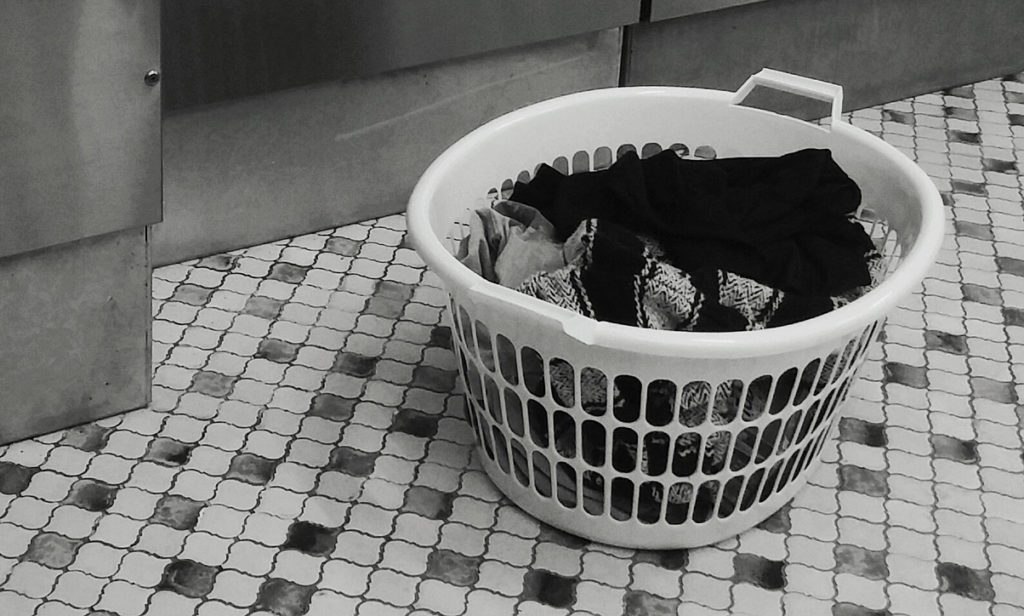416…the number of loads of laundry we do every year! As if we don’t hate laundry already, there are a few extra things to do the next time it’s laundry day. Take our advice, and you’ll be in good shape.
We’re sure you’ve seen it on the news – dryers can pose a large safety threat to your home and family if they are not properly taken care of. This isn’t something we usually think of right away or make time for. However, it’s an important reminder for the everyday homeowner, maintenance workers, and even laundromat owners.
According to the U.S Fire Administration, one of the leading causes of house fires are dryer fires caused by lint buildup. What exactly needs to be done to unclog those vents? Most people typically empty the lint trap inside the dryer door. However, there’s another area that is often overlooked: the tubing and ducts at the back of the dryer. These are the hoses that run from the dryer vent to the outside hookup and have the highest potential to cause a dryer fire.
There’s No Easy Way to Spin it
When laundry is put in the dryer, lint and debris from the clothing collect in the dryer vents . Most people assume their lint traps catch all the lint, and that all they need to do is clean them out after each load. However, a significant amount of this lint is not caught by the lint trap and builds up inside the dryer-even on the heating element! If you are skeptical, try this experiment: pull out the lint trap and look underneath it- you may find large mounds of lint staring at you. Lint can build up on the heating element and in other places inside the dryer, causing it to overheat and possibly catch fire.
Did you know that 13 people die from fires caused by clogged dryer vents and over 400 are injured every year?! Newer and more modernized houses have dryers installed in locations other than the basement. The venting for these locations may require longer distances, making vents harder to reach and allowing more places for lint to build up. No matter where your dryer is in your house, we can’t eliminate lint buildup in dryers but we can take precautionary measures.
3 Signs You Need Dryer Vent Cleaning
1. The clothes are taking an inordinately long period of time to dry
2. Clothes come out hotter than usual
3. If the vent hood flapper doesn’t open
Dryer Vent Safety Tips at Home
Keeping your dryer clean will significantly reduce dryer fire hazards. Here are some common dryer vent cleaning practices you can do at home to help keep things clean.
1. Make sure the dryer duct is made of solid metallic material. Both vinyl and foil are combustible and spiral-wound surfaces tend to catch lint more readily.
2. Avoid kinking or crushing the dryer duct to make up for installation in tight quarters -this further restricts airflow. If you really want to save the extra space, the Dryerbox is a new invention that allows the dryer to be safely installed against the wall.
3. Use a lint brush or vacuum attachment to remove accumulated lint from underneath the lint trap.
4. Use a vacuum attachment to clean the back of the dryer around the hoses.
5. Check to make sure the outside vent is open and there is no blockage from things like animal nests.
6. Keep the area around the dryer free of clutter.
Doing these things every so often will help keep things tidy until we can stop by and make sure the entire system is staying healthy. But ultimately, the best way to avoid a fire by dryer vent is to hire a professional company to clean the dryer duct. This will reduce the fire hazard, increase the dryer’s efficiency and increase its lifespan. In addition, you are less likely to experience water damage.
The dryer vent cleaning technicians at Capital Heating & Cooling:
1. Inspect the venting system behind the dryer to check for any damage or hazardous blockages
2. Remove lint and debris buildup from the dryer vent hoses with specialized tools
3. Make sure the dryer is properly connected
4. Additionally, we can replace old spiral wound hoses and flammable vents with the manufacturer recommended materials.
House fires from clogged dryer vents are a very real possibility and we hope to encourage our customers to try one some of these tips. If you think you’re ready for a professional, we’d love to hear from you!
Most people assume their lint traps catch all the lint, and that all they need to do is clean them out after each load. However, a significant amount of this lint is not caught by the lint trap and builds up inside the dryer-even on the heating element! If you are skeptical, try this experiment: pull out the lint trap and look underneath it- you may find large mounds of lint staring at you. Lint can build up on the heating element and in other places inside the dryer, causing it to overheat and possibly catch fire.


